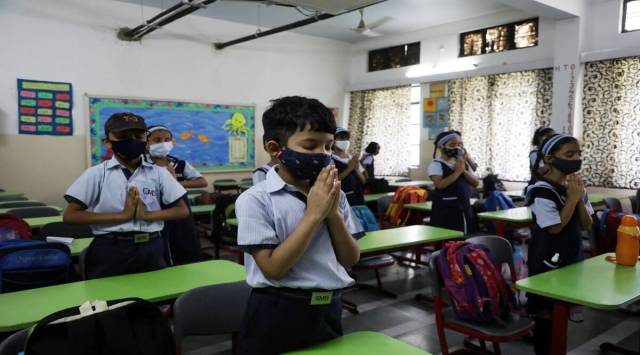One in three students of Classes 1 and 2 never attended in-person classes: ASER survey 2021
The concern is deepened by the survey's finding that youngest learners also have the "least access to technology".
 Figures show that almost a third of all children in grades I and II did not have a smartphone available at home. (Express File Photo)
Figures show that almost a third of all children in grades I and II did not have a smartphone available at home. (Express File Photo)From no experience of pre-primary classes to lack of access to digital devices, the pandemic has left the youngest entrants in India’s formal education system particularly vulnerable and the consequences of not addressing their specific needs can be “grave”, according to the Annual Status of Education Report (ASER) survey 2021.
Suman Bhattacharjea, the director of ASER research centre, has observed in the survey report released Wednesday that about one in every three children in Classes I and II have never attended in person classes before. Among government school students of Classes I and II, 36.8 per cent never attended pre-primary classes, while the corresponding share is 33.6 in private schools.
“Entry to the world of formal education can be a difficult process at the best of times but the challenges these young children face as learners are therefore likely to be far more complex than would have been the case in pre-pandemic times,” Bhattacharjea said.
The concern is deepened by the survey’s finding that youngest learners also have the “least access to technology”. Figures show that almost a third of all children in grades I and II did not have a smartphone available at home. While between 2018 and 2021, the percentage of enrolled children having at least one smartphone at home has risen from 36.5 to 67.6, only 19.9 per cent children in grades I-II have access to the devices whenever they require. The access rises with age, with 35.4 per cent students in Classes IX and above having constant access.
The survey report points out that while 91.9 per cent enrolled children have textbooks for their current grade, only about a third (33.5 per cent) of children in grades I-II of yet to be reopened schools reported to have received learning material from schools, in the form of worksheets in print or virtual form, online or recorded classes, or other learning-related video clips.
“Even fewer had had some form of contact with teachers to discuss children’s learning (28.5%). The proportion of families who had some contact with teachers was heavily skewed towards better off families, as proxied by parental education levels,” said Bhattacharjea.
Another important indicator that may have a bearing on the learning outcomes of young learners is the fact that the share of enrolled children who receive support while studying at home has dipped from 81.5 per cent in 2020 to 74.3 per cent in 2021. ASER Centre Director Wilima Wadhwa said migrants returning to work with the reopening of the economy might be one of the reasons behind the dip.
Overall, while the report does not shed light on learning outcomes, a sample assessment done in Karnataka in March 2021 that covered 20,000 children aged 5-15 years found “steep drops” in foundational skills, particularly in lower primary grades, which reaffirms the need to provide special attention to the students of primary classes as they return or enter schools for the first time.
- 01
- 02
- 03
- 04
- 05































